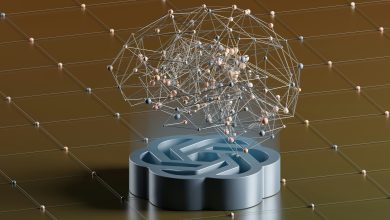
A game-changing shift in how the United States Patent and Trademark Office (the “USPTO”) examines Artificial Intelligence (“AI”) patents has unleashed a surge in filings, and innovators should take note. Particularly, in August, the USPTO clarified its approach to examining AI and Machine Learning (“AI/ML”) patents, triggering a renewed interest in reinvigorating languishing AI-related patent applications and filing new patent applications directed to all manners of AI, machine learning, deep learning, model training, and more. This has been a fantastic development for innovators, as it in many ways has made AI/ML-related patents faster and cheaper to obtain than in the past at a time when trade secret theft is a growing concern and at a time when companies are aggressively refining their Intellectual Property (“IP”) strategies. That said, the AI/ML patent world is now arguably moving faster than ever: those innovating in the AI/ML space should act fast to protect their inventions.
USPTO Provides “Reminders” on AI/ML Patent Eligibility in August
Prior to the USPTO’s August memorandum, it was somewhat difficult (but not impossible) to acquire patents relating to AI/ML inventions. The USPTO commonly rejected AI/ML-related patent applications as lacking “subject matter eligibility” because they were allegedly directed to “abstract ideas” like “mental processes.” For instance, it was very common for USPTO examiners to reject ML-related patent applications because they related to concepts (e.g., learning from data, making inferences from that data) that were, at least in the view of the patent examiners at the USPTO, too similar to human mental processes. Such rejections often dismissed genuine technical advances as mere “generic” use of computers, effectively killing many pending AI/ML patent applications. Those subject matter eligibility rejections were often a sizeable and very expensive hurdle for patent applicants: for example, it could take multiple years and multiple lengthy legal filings to overcome such rejections (if they could be overcome at all: some applicants would give up).
In August, the USPTO drastically changed its policies in a somewhat quietly-released “Memorandum” to patent examiners containing “[r]eminders on evaluating subject matter eligibility of claims.” That memorandum explicitly and significantly relaxed the standard for AI/ML-related patent applications: the USPTO reminded its examining corps that the “mental process grouping is not without limits,” and that patent claims “that encompass AI in a way that cannot be practically performed in the human mind do not fall within this grouping.” The USPTO also provided various examples of patent-eligible AI/ML-related patent applications and further underscored the importance of reviewing the patent application to identify whether the “disclosed invention improves technology or a technical field.” The message both within and without the USPTO was clear: examiners were to stop burying AI/ML-related patent applications in years’ worth of weak subject matter eligibility rejections.
Significant Uptick in AI and Machine Learning-Related Patent Filings, Grants
The USPTO’s memorandum has already triggered a surge in patent application filings and grants. Late in August, organizations with pending AI/ML-related patent applications were able to quickly push USPTO examiners to withdraw issued subject matter eligibility rejections, breathing new life into formerly-stuck pending patent applications. In some instances, AI/ML-related patent applications that had long been stuck in a costly appeals process (often requiring thousands of dollars in fees and months of delay) were able to be quickly reconsidered and allowed within one to two weeks. And, while a few organizations had essentially given up on filing patent applications describing concepts like trained ML models due to the perceived costs of receiving and fighting subject matter eligibility rejections from the USPTO, those organizations are reinvigorated and filing more AI/ML-related applications than ever.
AI Patents Also Gain Value Amid Rising Trade Secret Risks
Trade secret theft has become an increasingly serious risk in the AI/ML space. As reported by Reuters earlier this month, Elon Musk’s AI startup xAI has been rushing to prevent one of their former engineers from disclosing their AI-related trade secrets to OpenAI. This is far from the first time that trade secret theft has happened in the AI/ML world: many major organizations have discovered, often far too late, that their former employees have disclosed their important trade secrets to their biggest competitors. Along those lines, it is unfortunately not uncommon for competitors to specifically poach engineers/academics because of the secrets they know, rather than the skills they have.
There are many legal remedies for trade secret theft; however, AI/ML-related trade secrets can be difficult to maintain in some circumstances. Trade secrets must be kept a secret, which can be difficult to do in some parts of the AI/ML industry, where publications, presentations, and online discussions are both commonplace and expected. After all, it can be very difficult to convince top-performing AI engineers to keep their best innovations a secret, especially if those same engineers spent previous years promoting their expertise by publishing and presenting in academia. Moreover, reverse engineering of trade secrets is a constant threat for organizations with public-facing models and for organizations that need to detail aspects of their innovations for marketing purposes. Issues like those often force organizations to carefully select which innovations, if any, to keep as a trade secret, and then to implement complex controls and procedures to carefully monitor access to secrets. For some, that works. For others, that’s an incredibly inconvenient burden.
Cases like xAI’s underscore the stakes here: once a trade secret is lost, protection may be gone forever. In contrast, patents can’t be leaked or stolen in quite the same way, giving them added value. With patents, secrecy is not required (in fact, patent publications are intended to disclose the invention(s) to the world), inventors can be publicly rewarded for their efforts, and competitors can be prevented from making, using, selling, or even offering to sell the patented invention. And, while patents are not cheap, they can be easily licensed/sold and can even discourage competitors from bringing their own patent infringement lawsuits, often making them a worthwhile investment. Better still, the USPTO’s August memorandum has arguably made acquiring those AI/ML-related patents easier and cheaper to acquire than they have ever been.
Organizations Should Develop/Revise Comprehensive IP Plan
The rapid change in the AI/ML patent world originating from the USPTO’s memo should be a wake-up call for organizations: the AI/ML-related IP world is changing rapidly (there are major legal decisions published almost every week), and a comprehensive IP strategy is thus more valuable than ever. In today’s fast-moving AI marketplace, patents, trade secrets, copyrights, trademarks, and even relatively less well-known protections like design patents or trade dress can make the difference between market dominance and being overtaken by competitors. Now is the time to act: organizations that keep an eye on these rapid changes in the IP world stand to benefit, and those who fail to adapt risk having their innovations scooped, copied, or rendered worthless.



